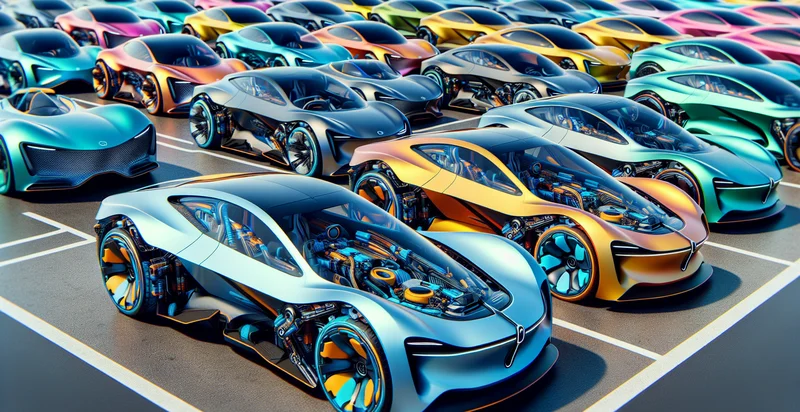Identify togg models
using AI
Below is a free classifier to identify togg models. Just upload your image, and our AI will predict if it contains a dog - in just seconds.

Contact us for API access
Or, use Nyckel to build highly-accurate custom classifiers in just minutes. No PhD required.
Get started
import nyckel
credentials = nyckel.Credentials("YOUR_CLIENT_ID", "YOUR_CLIENT_SECRET")
nyckel.invoke("togg-models", "your_image_url", credentials)
fetch('https://www.nyckel.com/v1/functions/togg-models/invoke', {
method: 'POST',
headers: {
'Authorization': 'Bearer ' + 'YOUR_BEARER_TOKEN',
'Content-Type': 'application/json',
},
body: JSON.stringify(
{"data": "your_image_url"}
)
})
.then(response => response.json())
.then(data => console.log(data));
curl -X POST \
-H "Content-Type: application/json" \
-H "Authorization: Bearer YOUR_BEARER_TOKEN" \
-d '{"data": "your_image_url"}' \
https://www.nyckel.com/v1/functions/togg-models/invoke
How this classifier works
To start, upload your image. Our AI tool will then predict if it contains a dog.
This pretrained image model uses a Nyckel-created dataset and has 2 labels, including T10X and Togg Suv.
We'll also show a confidence score (the higher the number, the more confident the AI model is around if it contains a dog).
Whether you're just curious or building togg models detection into your application, we hope our classifier proves helpful.
Related Classifiers
Need to identify togg models at scale?
Get API or Zapier access to this classifier for free. It's perfect for:
- Product Recognition in Retail: This use case involves the automatic identification of products on store shelves using the True image classification function. Retailers can leverage this technology to maintain inventory levels, analyze shelf space utilization, and enhance customer engagement through targeted promotions.
- Wildlife Monitoring: Conservationists can utilize the image classification function to identify and track animal species in their natural habitats. By analyzing images captured in wildlife reserves, researchers can monitor animal populations, study behaviors, and develop strategies for habitat preservation.
- Quality Control in Manufacturing: Manufacturers can implement the True image classification function to inspect products during the production process. By identifying defects or inconsistencies in real-time, companies can ensure higher quality standards and reduce waste from faulty products.
- Medical Imaging Diagnostics: Healthcare professionals can employ this image classification technology to aid in diagnosing medical conditions from imaging scans. The function can differentiate between healthy and unhealthy tissues, enhancing the accuracy of diagnoses and streamlining patient treatment plans.
- Security Surveillance: Security agencies can use the classification function in surveillance systems to identify individuals or objects of interest in real-time. This application can enhance public safety by providing alerts for suspicious activities or unauthorized access in controlled areas.
- Social Media Content Categorization: Social media platforms can utilize image classification to automatically categorize and tag user-generated content. This technology can enhance user experience by improving content discovery and allowing for more accurate targeting of advertisements.
- Autonomous Vehicle Navigation: The True image classification function can be integrated into autonomous vehicles to recognize and classify road signs, pedestrians, and other vehicles. This capability is essential for safe navigation, providing the vehicle with the necessary information to make real-time driving decisions.


